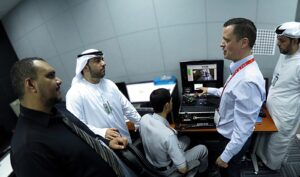The Future of Video Analysis in Crisis Response
The future of video analysis in crisis response holds immense promise, driven by technological advancements, evolving operational needs, and emerging trends in emergency management. Here’s a glimpse into what the future may hold for video analysis for crisis response:
1. Artificial Intelligence and Automation
Enhanced AI Capabilities: AI algorithms will continue to evolve, becoming more sophisticated and capable of performing complex video analysis tasks with greater accuracy and efficiency. Deep learning techniques will enable AI systems to learn from vast amounts of data and adapt to dynamic crisis scenarios in real-time.
Automated Response Systems: AI-powered video analysis systems will play a central role in automated response systems, enabling autonomous drones, robots, and other unmanned systems to detect, assess, and respond to crisis events without human intervention. These systems will enhance response capabilities, reduce response times, and mitigate risks to responders.
2. Edge Computing and IoT Integration
Decentralized Processing: Edge computing will become increasingly prevalent, enabling video analysis to be performed locally on edge devices, such as surveillance cameras, drones, and IoT sensors. This will reduce latency, bandwidth requirements, and dependency on centralized infrastructure, making video analysis more scalable and resilient.
Integrated Sensor Networks: Video analysis will be integrated with IoT sensor networks, combining visual data with other sensor data, such as environmental sensors, biometric sensors, and geospatial sensors. This integrated approach will provide a holistic view of crisis environments, enabling more informed decision-making and response coordination.
3. Augmented Reality and Immersive Visualization
Immersive Visualization Tools: Augmented reality (AR) and virtual reality (VR) technologies will revolutionize the way emergency responders visualize and interact with video data. Immersive visualization tools will enable responders to overlay real-time video feeds onto physical environments, providing enhanced situational awareness and decision support.
Mixed Reality Command Centers: Mixed reality command centers will emerge, where emergency responders can collaborate and coordinate response efforts in virtual environments overlaid with real-time video and sensor data. These command centers will facilitate more effective communication, coordination, and resource allocation during crisis response operations.
4. Predictive Analytics and Early Warning Systems
Predictive Analytics Models: Predictive analytics models will leverage historical data, sensor data, and real-time video analysis to forecast crisis events, anticipate trends, and issue early warnings. These models will enable proactive risk management strategies and preemptive response actions to mitigate the impact of crises.
Early Warning Systems: Early warning systems powered by video analysis will provide timely alerts and notifications to decision-makers and stakeholders, enabling rapid response and evacuation procedures in anticipation of imminent threats, such as natural disasters, industrial accidents, or security breaches.
5. Ethical and Legal Considerations
Privacy and Data Protection: As video analysis technologies become more pervasive, ethical and legal considerations surrounding privacy and data protection will become increasingly important. Robust safeguards and regulations will be necessary to ensure the responsible and ethical use of video data in crisis response operations.
Transparency and Accountability: There will be a growing emphasis on transparency and accountability in the deployment and operation of video analysis systems for crisis response. Stakeholders will demand clear guidelines, oversight mechanisms, and accountability measures to ensure that video analysis technologies are used in a manner that respects human rights and civil liberties.
In summary, the future of video analysis in crisis response holds tremendous potential to transform emergency management practices, enhance response capabilities, and save lives. By embracing emerging technologies, fostering collaboration, and addressing ethical considerations, we can harness the power of video analysis to build more resilient and adaptive crisis response systems for the challenges of tomorrow.


